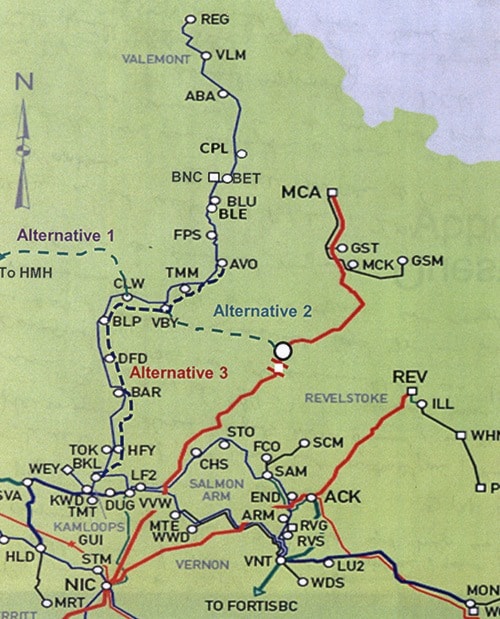CLEARWATER – Three reps from BC Hydro had a difficult time of it during the May 21 Clearwater town council meeting.
They were there to convince council that the present transmission system has plenty of capacity for any potential growth in the North Thompson Valley – other than major projects such as twinning the Trans Mountain pipeline.
Unfortunately for their case they were sitting in the dark because of a power outage.
The outage didn't really conflict with what they were saying, said Ajay Kumar, director of transmission and planning for BC Hydro.
The outage (caused by lightning during a windstorm) was localized, he said. It was not related to any shortage of transmission capabilities.
The North Thomson transmission line has a capacity of about 116 MVA (megavolt amperes – a measure of apparent power). Its present maximum load is between 75 and 80 MVA.
Assuming there is no new transmission load, the existing North Thomson system has the capacity to supply the forecasted system for at least the next 10 years, Kumar said.
The transmission line is 350 km long, which makes it difficult to keep the voltage stable at the end of the line. However, it is not the longest such radial line in the BC Hydro system. That honor belongs to the 450 km line that runs west from Prince George towards Prince Rupert.
Kinder Morgan's proposed twinning of its Trans Mountain pipeline would increase the load on the system by about 40 per cent, the BC Hydro spokesperson said.
Yellowhead Mining's proposed copper-gold-silver mine at Harper Creek near Vavenby would add about another 80 MVA to the load – essentially double what it is now.
The present line has a capacity of 138 kV (kilo-volts).
Three options for longterm reinforcement are being looked at.
The first would be a 230 kV line from 100 Mile House to Clearwater. The second would be a 230 kV line from south of Mica Dam across the mountains to Vavenby. Option three would be to twin the existing line from Kamloops up the Valley with another 138 kV line.
Option two appears to be technically the best route, but more consultation is needed with First Nations and others, Kumar said.
Other options looked at included a 230 kV line from Lake Williston south to Valemount (to tie in with independent power producers there), Mica to Blue River, and Savona to Clearwater/Vavenby.
Independent power producers in the Valley, such as the one at Bone Creek, are highly seasonal with the power they produce and so do not do anything to reduce the load capacity needed.
Typically, the public power utility requires revenue guarantees such as a commitment to provide funding plus buy a defined amount of electricity before expanding its transmission system, the BC Hydro rep said.
Kumar was accompanied during his presentation to Clearwater town council by Ming Zou, growth capital planning team leader, and Dag Sharman, BC Hydro media spokesperson.
BC Hydro confirmed last February that it had stopped planning for a second power-line for the North Thompson Valley.
